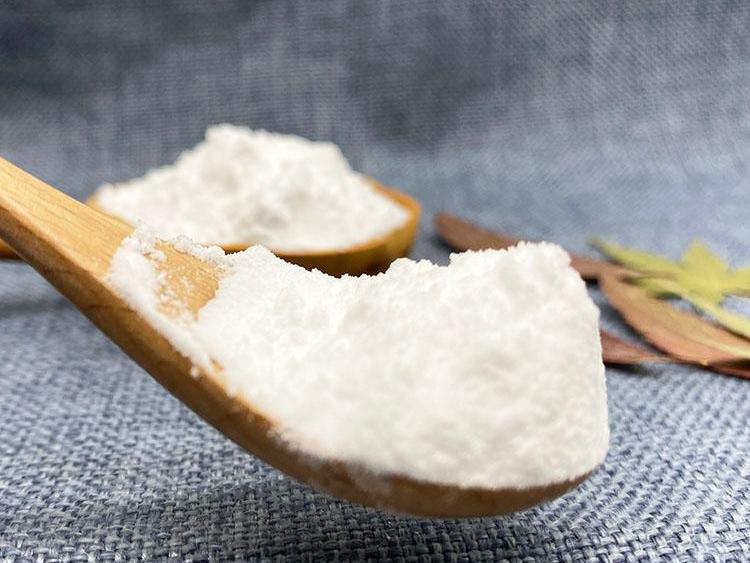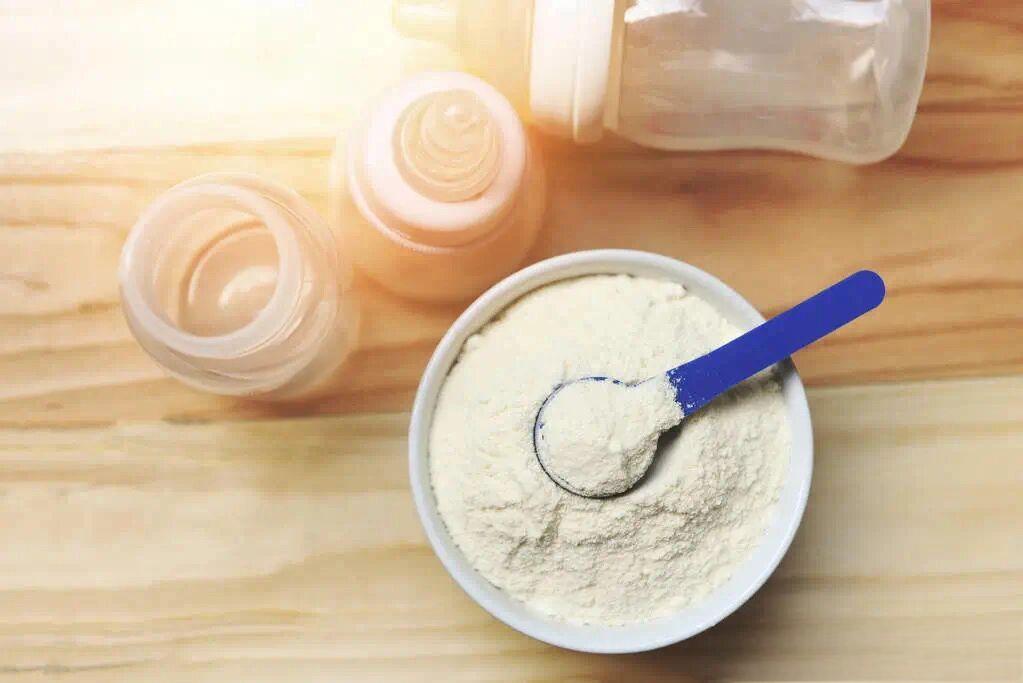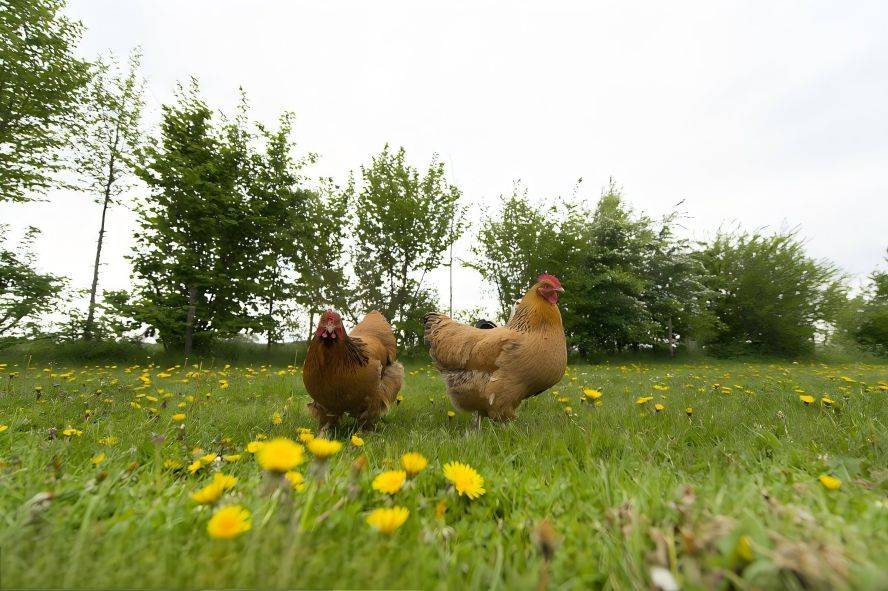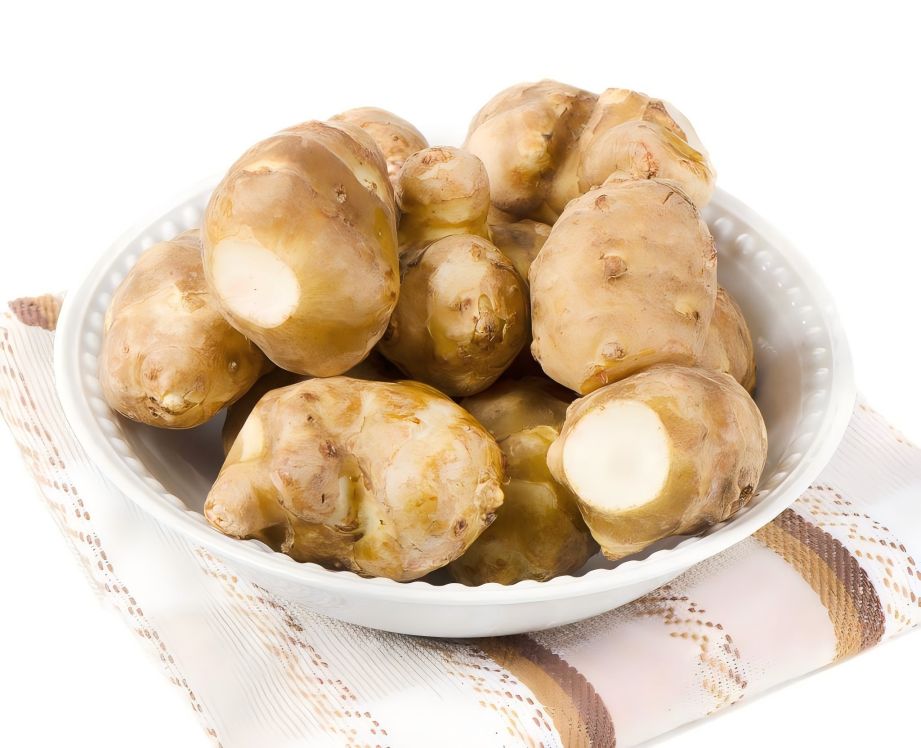What Is the Production Method of Oligosaccharide Powder?
Functional oligosaccharides are composed of 2 to 10 monosaccharides polymerized by glycosidic bonds. They cannot be hydrolyzed by the body's enzyme system, cannot be absorbed in the small intestine, and can promote the growth of bifidobacteria in the body after entering the large intestine. They have the functions of regulating the balance of intestinal flora, promoting the absorption of calcium and phosphorus, preventing tooth decay, and improving the body's immunity. After ingestion, they will not cause an increase in blood sugar or insulin, and can be consumed by special populations such as diabetics, hypertensives, and obese people [1]. Functional oligosaccharides are attracting increasing attention as a new resource of food. More than a dozen varieties of oligosaccharides are already on the market. Oligosaccharides were developed relatively early in Japan, and a relatively complete range of varieties is available. Among these, oligo-isomalt special populations.
Functional oligosaccharides are attracting increasing attention as a new source of food, and there are already more than a dozen varieties on the market. In Japan, oligosaccharides were developed relatively early, and there is a relatively complete range of varieties. Among these, isomaltooligosaccharides and fructooligosaccharides have the largest production and sales volumes; the European and American markets are dominated by fructooligosaccharides and galacto-oligosaccharides.
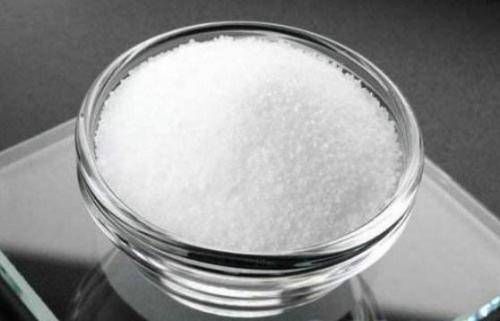
The industrialization of oligosaccharides in China began in 1996, when Baolingbao Bio-Technology Co., Ltd. successfully tested and started production of isomaltooligosaccharides. Currently, the main varieties of oligosaccharides on the domestic market are isomaltooligosaccharides, fructooligosaccharides, galactooligosaccharides, and soy oligosaccharides, with a production capacity of about 150,000 tons per year. Due to the backwardness of domestic separation and purification technology and equipment in the past, the overall quality of domestic oligosaccharides, especially high-purity oligosaccharides, lags behind that of developed countries, making it difficult to meet the needs of special groups of people. Oligosaccharides with low purity will affect their effectiveness. For example, if a diabetic patient consumes oligofructose with a purity of 50%, their blood sugar will rise quickly. However, if they consume oligofructose syrup with a purity of 93% on an empty stomach, their blood sugar will change very little. With the expansion of the application fields of oligosaccharides and the improvement of production equipment, some high-purity oligosaccharides have already been domestically produced [2].
1 Functional oligosaccharide production technology
Various functional oligosaccharides exist in nature. Depending on the mode of existence and the quantity required, oligosaccharides can be produced on a large scale using extraction, chemical, fermentation or enzymatic conversion methods.
1. 1 Extraction method
The extraction method is a production method for oligosaccharides that exist in large quantities in nature and have a simple separation process. It can be used to produce soy oligosaccharides. Soybean oligosaccharides are a collective term for raffinose, stachyose and sucrose, of which the main active ingredients are raffinose and stachyose. They are currently mainly isolated and extracted from the whey of soybean meal, which is separated from the protein. The production process involves salting out the whey, removing residual protein by ultrafiltration, then decolorizing with activated carbon, ion exchange, concentration and spray drying to obtain the product [3]. Generally, 75% of soy oligosaccharides contain 18% of stachyose, 6% of raffinose and 24% of sucrose.
1. 2 Chemical method
The chemical method is an important method for modifying oligosaccharides. It can modify oligosaccharides and convert them into functional oligosaccharide products for different uses. Currently, the commercially available chitosan is mainly produced using chemical methods. It is mainly produced by using industrial waste crab shells and shrimp shells, which are alternately treated with acid and alkali to obtain chitin, and then treated with concentrated NaOH of 40% to 60% by mass at 100 to 180°C to obtain deacetylation and then dried to obtain chitosan. At present, the focus of chitosan research is on the use of various chemical bonds such as acylation and carboxymethylation for modification, to prepare chitosan derivatives with different properties and uses or water-soluble chitosan with lower molecular weight [4].
1. 3 Fermentation method
The fermentation method is the main production method for oligosaccharides from microbial sources. By changing the culture conditions of microorganisms, the overexpression of target oligosaccharides can be promoted. For example, chitosan is also naturally found in the cell walls of fungi and is the only alkaline polysaccharide that exists in large quantities in nature. Studies have found that the genera of Chaetomium, Rhizopus and Plasmopara in the order of Chaetomiales contain a wide variety of chitosans, which can be produced by microbial fermentation. However, due to the low yield, it has not yet been industrialized. Wang Weiping et al. [5] used Plasmopara ZH08 after mutagenesis treatment, and the chitosan yield was stable at 1.07 g/L.
1. 4 Enzyme conversion method
Enzyme conversion is the main method used in oligosaccharide production, using a special enzyme system to convert disaccharides or simple polysaccharides into functional oligosaccharides. At present, the enzyme preparations required for the routine production of functional oligosaccharides have basically been domestically produced. Isomaltooligosaccharides are produced using starch as the raw material. High-temperature-resistant α-amylase, fungal amylase, and β-amylase are used to hydrolyze the starch into maltose, which is then converted into isomaltooligosaccharides by α-glucosidase. After filtration, decolorization, desalination, and concentration, the yield of isomaltooligosaccharides is about 50%. Fructooligosaccharides are produced by the action of the enzyme fructosyltransferase, which is produced by fungal fermentation and converts high concentrations of sucrose. However, the activity of the enzyme fructosyltransferase is inhibited by the reaction by-product glucose, resulting in most fructooligosaccharide products containing large amounts of sucrose and glucose. Fructooligosaccharides can also be produced from inulin by inulinase, which produces fructose-fructose type fructooligosaccharides. Xylo-oligosaccharides are produced by processing corncobs into 5 mm particles, cooking and swelling to extract hemicellulose, then enzymatically digesting with xylanase, centrifuging, microfiltration, decolorization, ion exchange, and concentration to produce 70% xylo-oligosaccharides. Oligosaccharides such as galactooligosaccharides, lactulose, and lactulose are obtained by the conversion of raw materials such as lactose, sucrose, and fructose using galactosidase, followed by separation [6].
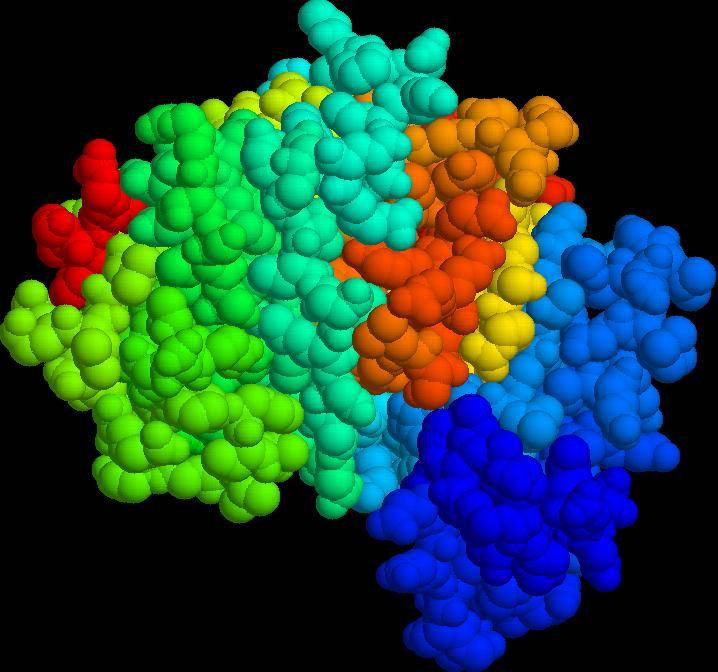
2 Functional oligosaccharide purification technology
The oligosaccharide products obtained by the above methods generally have a purity of less than 70%. They can be added to ordinary foods and health products, but they still contain glucose, sucrose, maltose, etc., and cannot be consumed by special populations. Oligosaccharides can be purified and refined using enzymatic, fermentation, chromatographic, and nanofiltration membrane methods to achieve a purity of more than 95%.
2. 1 Enzyme method
In the crude oligosaccharide solution, the purity of oligosaccharides is increased by removing or converting by-products with special enzymes. For example, adding glucose isomerase or glucose oxidase to the reaction system of fructooligosaccharides can reduce the glucose content, alleviate the feedback inhibition of fructose transferase, and improve the conversion efficiency of fructose transferase. Glucose oxidase is more effective, and the resulting gluconic acid can be removed by ion exchange, and the oligosaccharide content can reach up to 98%.
2. 2 Fermentation method
Microbial fermentation is one of the main methods for producing high-purity oligosaccharides. Taking advantage of the recalcitrance of most functional oligosaccharides, yeast with good fermentation properties is used to remove sucrose, glucose, maltose and other impurities from the oligosaccharide solution, so that the oligosaccharide content can reach more than 95%. Wang Wenxia et al. [7] used soy whey as the fermentation substrate, added brewer's yeast and fermented for 5 h. The content of raffinose and stachyose reached more than 97%, and sucrose was basically removed. IMO-500 oligoisomaltose syrup can be fermented by yeast and centrifuged to obtain IMO-900 high-purity product. Zhang Tao et al. [8] used a yeast fermentation method in a 25% fructooligosaccharide solution to obtain a fructooligosaccharide product with no glucose and a fructooligosaccharide concentration of 82.85%. After the action of fructose transferase, the fructooligosaccharide concentration can be increased to 85.23%.
2. 3 Chromatography
Chromatographic separation technology has been widely used in the production of oligosaccharides. At present, the sequential simulation moving bed (SSMB) chromatographic separation technique has achieved the separation of the three-component group of monosaccharides, disaccharides and oligosaccharides. Not only has it achieved the continuous production of the target oligosaccharides with high purity, but it has also obtained high-purity by-products such as glucose, fructose, sucrose and maltose, which can be recycled and reused, greatly reducing production costs [9]. By applying chromatographic separation technology in a sequential simulated moving bed, the purity of the oligoisomaltose, oligofructose and oligogalactose products can reach more than 95%, achieving the continuous production of high-purity oligosaccharide products.
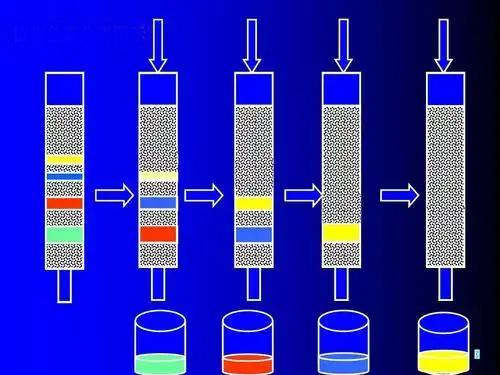
2. 4 Nanofiltration membrane method
Nanofiltration membranes have a molecular weight cut-off between 100 and 1000 Dalton. By selecting the appropriate nanofiltration membrane, oligosaccharides can be separated from glucose, fructose and some sucrose. The IMO-900 product obtained using nanofiltration membrane separation technology has a monosaccharide content of less than 2% and a total functional ingredient content of more than 95%. Feng Wenliang et al. [10] used a nanofiltration membrane device to successfully remove glucose and fructose with a molecular weight of 180 and sucrose with a molecular weight of 342 from oligofructose with a mass fraction of 53.73%, resulting in an oligofructose content of more than 95%. The by-products glucose, fructose, sucrose and maltose recovered by nanofiltration membrane technology can be effectively recovered after concentration. High-efficiency sweetener fructose syrup can be obtained after enzymatic hydrolysis and concentration.
3 Application of functional oligosaccharides
3. 1 Application in food and health products
Oligosaccharides are widely used in foods and health products due to their ability to regulate the intestines, promote mineral absorption and boost immunity. In Europe, fructooligosaccharides have been successfully used in yoghurt, beverages, cheese, fillings, ice cream, chocolate, sweets and meat products, while galacto-oligosaccharides are used in high-end infant formulas and dairy products. In Japan, 171 special health foods containing oligosaccharides were approved in 1999, including isomaltooligosaccharides, fructooligosaccharides, soy oligosaccharides, xylo-oligosaccharides, galacto-oligosaccharides, lactulose, and lactulose. In China, oligosaccharides are mainly used as food ingredients, and there is still a gap between their scope of use and the amount added compared to developed countries. Oligosaccharides with high purity are the first choice for sweeteners for special populations such as obese, diabetic, and middle-aged and elderly people because they are completely independent of insulin. Oligosaccharides with high purity have broad development prospects in the field of food and health care [11-12].
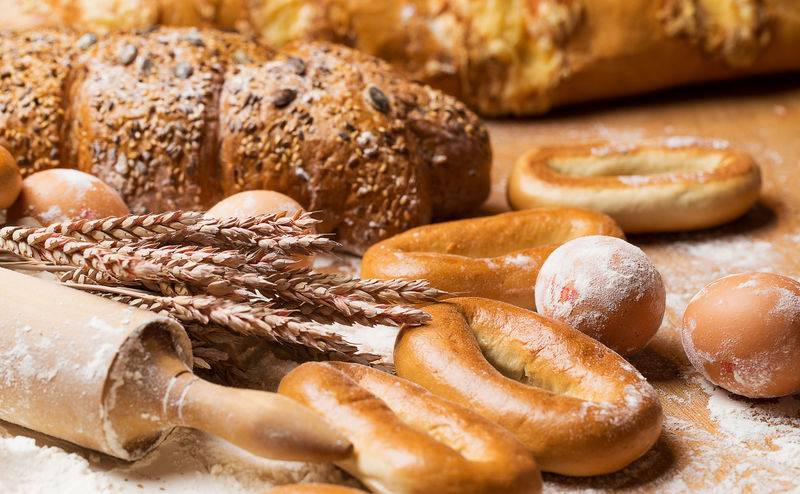
3.2 Application in the feed industry
The serious consequences of using antibiotics in feed have attracted the attention of society, and the European Union has banned the addition of antibiotics as feed additives since 1999. The use of oligosaccharides can enhance the reproduction of beneficial intestinal bacteria, thereby inhibiting intestinal pathogens and improving immunity and disease resistance. The resulting oligosaccharides or new feed additives combining oligosaccharides and probiotics are popular with customers. Studies have found that adding oligosaccharides to feed significantly improves the growth performance and health of broiler chickens; the body length and weight of bighead carp are significantly higher than those of the control group; adding oligosaccharides to just-weaned piglets can reduce the diarrhea rate of piglets, increase the average daily weight gain by 13.8%, reduce the feed conversion ratio by 8.1%, and reduce mortality. In addition, the organic acids produced by the proliferation of beneficial bacteria such as Bifidobacterium can help improve the absorption rate of calcium, magnesium and iron in the feed. Studies have found that in the feed industry, the addition range of isomaltooligosaccharides (IMO-500, 50%) is 0.1% to 0.5%, the addition range of fructooligosaccharides (FOS, 50%) is 0.3% to 0.4%, and the addition range of xylo-oligosaccharides (XOS, 35%) ranges from 0.02% to 0.025% is more appropriate. With the promotion of healthy farming and the reduced use of antibiotics, oligosaccharides or combinations of oligosaccharides and probiotics will become increasingly common [13].
3. 3 Applications in other fields
In agriculture, oligosaccharides can regulate the soil microbial flora, improve the absorption of nitrogen, potassium and other elements by crops, stimulate plants to produce disease-resistant substances such as phenols and phytoalexins, improve the disease resistance of plants, and increase fruit yields. In addition, chitosan can form a film on the surface of fruits and vegetables and is widely used as a fruit and vegetable preservative. In the field of medicine, oligosaccharides can proliferate the body's beneficial bacteria, preventing and treating diarrhea and constipation; they can also activate the immune system and improve the body's disease resistance [11-14].
4 Prospects
At present, the domestic oligosaccharide industry has basically taken shape. High-purity oligosaccharides such as isomaltooligosaccharides and fructooligosaccharides have been domestically produced. After years of market publicity and promotion, product recognition is gradually increasing. However, there are still some problems with the research and development of oligosaccharides in China. First, there is a common and profound understanding of the physiological effects of oligosaccharides, but the research on the mechanism at the cellular or molecular level is still lacking. There is also a lack of effective and extensive data to support the refined quantitative use of oligosaccharides. In terms of product development, the principles of combining oligosaccharides in products, their stability, reactivity, and pre- and post-effect analysis are not yet perfect, and the scope and field of application of the products also lag far behind those in developed countries. China's oligosaccharide industry has great market potential, and a large number of oligosaccharide products or products with added oligosaccharides are waiting to be developed. The large-scale development of China's oligosaccharide industry requires the joint efforts of scientific researchers, manufacturing enterprises, and application enterprises.
References
[1] Wang Naiqiang. Research status and prospects of oligosaccharides in China [J]. Fine and Specialty Chemicals, 2007, 15 (12): 1-5.
[2] Liu Feng, Yang Haijun. Current status and development trends of oligosaccharide applications at home and abroad [J]. Fermentation Science and Technology Newsletter, 2009, 38 (4): 53-56.
[3] Pan Lihong. Research on the extraction process of soy oligosaccharides [J]. Northern Pharmacy, 2012, 9 (6): 24.
[4] Ju Hongfang. Research on the preparation, modification and adsorption properties of chitosan [D]. Suzhou: Soochow University, 2005: 3-25.
[5] Wang Weiping, Du Yumin, Hu Jiajun. Mutagenic breeding of high-yielding strains of chitosan [J]. Anhui Agricultural Science, 2011, 39(3): 1266-1267.
[6] Yu Rong, Wang Siliu. Research progress on the preparation of functional oligosaccharides by enzymatic methods [J]. China Food and Nutrition, 2009 (12): 32-35.
[7] Wang Wenxia, Liu Xiaoyan, Song Chunli. Research on the process conditions for the purification of functional soy oligosaccharides by microbial fermentation [J]. Chinese Condiments, 2011, 36(4): 27-31.
[8] Zhang Tao, Jiang Bo, Wang Zhang. Production of high purity fructooligosaccharides by fermentation [J]. Journal of Wuxi University of Light Industry, 2002, 21(3): 230-233.
[9] Liu Zongli, Wang Naiqiang, Wang Mingzhu. Application of simulated moving chromatographic bed separation technology in the production of functional sugars [J]. China Food Additives, 2011, 34 (4): 240-244.
[10] Feng Wenliang, Wang Jing, Jia Xiaohong. Research on the production of high-purity fructooligosaccharides by nanofiltration technology [J]. Dairy Science and Technology, 2003 (3): 102-105.
[11] You Xin. Production and application of functional oligosaccharides [M]. Beijing: China Light Industry Press, 2004: 5-40.
[12] Shan Liran, Gong Yuehua, Jia Jianguang. Research progress on four important functional oligosaccharides [J]. Journal of Northwest A&F University, 2006, 34(7): 96-100.
[13] Xu Jun, Gao Feng, Zhou Guanghong. Application of functional oligosaccharides in the feed industry [J]. Animal Ecology, 2006, 27 (6): 217-222.
[14] Lv Jiamei, Niu Rongli. Research progress of chitosan natural preservatives [J]. Chinese Journal of Pharmaceutical Sciences, 2012, 2(3): 29-31.


 English
English French
French Spanish
Spanish Russian
Russian Korean
Korean Japanese
Japanese